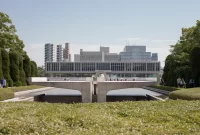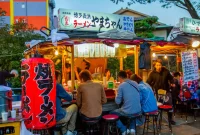Hiroshima: From Tragedy to Resilience
Reflecting on the Impact of the Hiroshima Atomic Bombing
In the tragic event that unfolded on August 6, 1945, Hiroshima became the target of the first atomic bomb used in warfare. The impact of this catastrophic event was immediate and devastating. The city was decimated, and tens of thousands of lives were lost in an instant.
The consequences of the bombing are still felt to this day. The survivors, known as hibakusha, experienced unimaginable suffering and continue to carry the physical, emotional, and psychological scars. Families were torn apart, futures were shattered, and a once vibrant city was reduced to rubble.
However, amidst the darkness, a story of resilience emerges. Despite the horrors they faced, the people of Hiroshima showed remarkable strength and determination to rebuild their lives and their city. From the ashes, a new Hiroshima rose, symbolizing hope, peace, and cooperation.
The Hiroshima Peace Memorial Park, with its iconic A-Bomb Dome, stands as a powerful reminder of the destruction caused by nuclear weapons and a testament to the human capacity for healing and reconciliation. The annual commemorations of the bombing serve as an opportunity for reflection, reminding us of the importance of peace and the need to prevent such tragedies from happening again.
Witness the Inspirational Recovery and Rebuilding of Hiroshima
The city of Hiroshima has come a long way since the tragic events of August 6, 1945, when atomic bombings ravaged the city and caused immense devastation. Despite this unimaginable tragedy, Hiroshima has showcased remarkable resilience and strength in its recovery and rebuilding efforts.
After the end of World War II, Hiroshima embarked on a mission to transform itself from a city in ruins to a symbol of peace and hope. The city’s reconstruction efforts were focused not only on physical infrastructure but also on fostering a deep sense of understanding, reconciliation, and peace.
Today, Hiroshima stands as a testament to the power of human resilience. The Peace Memorial Park, situated at the epicenter of the atomic bombing, serves as a solemn reminder of the past while also symbolizing a commitment to a peaceful future. The park’s iconic Peace Memorial Museum offers a moving and educational experience, chronicling the events of the bombing and inspiring visitors to strive for a world free from nuclear weapons.
Furthermore, Hiroshima has taken significant steps towards nuclear disarmament and advocating for peace. The city hosts the annual Hiroshima Peace Memorial Ceremony on August 6th, attracting people from around the globe who gather to remember the victims and reaffirm their commitment to peace.
Moreover, Hiroshima has transformed itself into a thriving and vibrant city, embracing modern architecture while preserving its historical sites and cultural heritage. Its rejuvenated cityscape stands as a powerful symbol of resilience and renewal.
Visitors to Hiroshima can explore various attractions, including the iconic Hiroshima Castle, Shukkeien Garden, and the lively Hiroshima Peace Boulevard. The city’s cuisine, including the famous Hiroshima-style okonomiyaki, offers a delightful culinary experience.
In conclusion, Hiroshima’s journey from tragedy to resilience is a remarkable testament to the indomitable spirit of its people. Through their unwavering commitment to peace, remembrance, and rebuilding, Hiroshima serves as an inspiration to the world. Witnessing the recovery and rebuilding of Hiroshima is not just a historical experience but also an opportunity for personal reflection and a call to action for a more peaceful and united world.
Visit the Peace Memorial Park and Museum for a Moving Experience
In the city of Hiroshima, Japan, lies a place of profound significance – the Peace Memorial Park and Museum. This park serves as a poignant reminder of the tragic event that occurred on August 6, 1945, when an atomic bomb devastated the city.
Upon visiting the Peace Memorial Park, one cannot help but be moved by the stories and exhibits that encapsulate the resilience and strength of the people of Hiroshima. The park itself is beautifully designed, filled with lush greenery and ornamental trees, providing a serene and tranquil atmosphere.
At the heart of the park, you will find the Peace Memorial Museum. This museum serves as a comprehensive documentation of the events leading up to the atomic bomb drop, the immediate aftermath, and the ensuing recovery and rebuilding efforts. It aims to educate visitors about the horrors of nuclear weapons while promoting peace and understanding.
Walking through the museum, you will be confronted with personal testimonies, artifacts, photographs, and interactive displays that vividly portray the impact of the bombing on Hiroshima and its people. The exhibits also shed light on the challenges faced by survivors, known as hibakusha, and their bravery in sharing their stories.
Make sure to visit the Memorial Cenotaph, which holds the names of all the known victims of the bombing. This solemn structure is a symbolic gesture to ensure that the memory of those who lost their lives will never be forgotten.
A visit to the Peace Memorial Park and Museum is not only informative but also serves as a powerful reminder of the importance of peace. It offers visitors an opportunity for reflection, empathy, and a renewed dedication towards a world free of nuclear weapons.
Conclusion
In conclusion, the journey of Hiroshima from tragedy to resilience serves as a testament to the indomitable spirit of its people. Despite the devastating impact of the atomic bombing, the city has rebuilt itself and emerged as a symbol of peace and hope. Through their dedication to peace education and promotion, the residents of Hiroshima continue to inspire the world with their commitment to a nuclear-free future.




